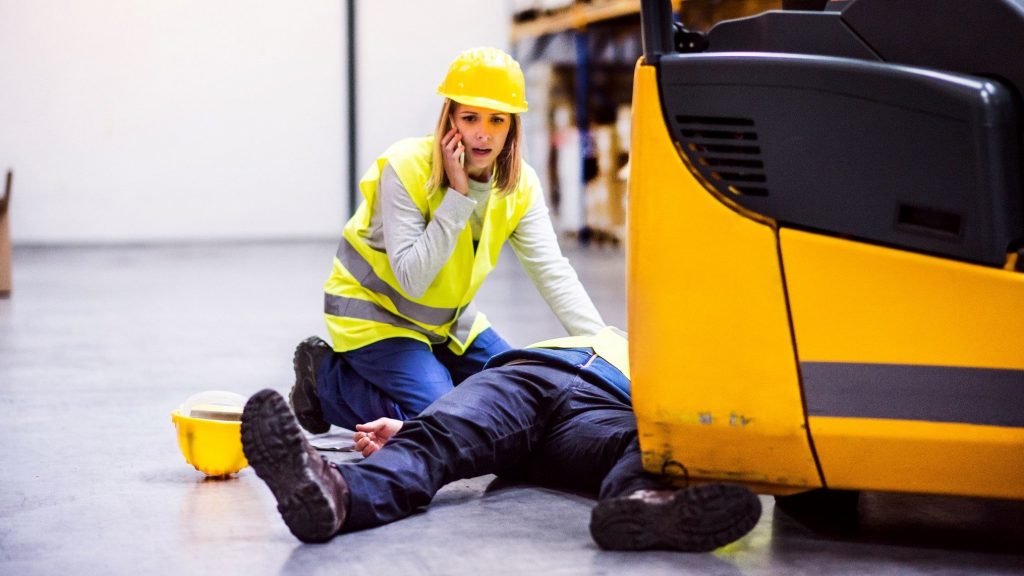Ever since the first VR simulator was used for the training of pilots, teaching strategies have been continuously trying to incorporate virtual reality. Its popular use in gaming shouldn’t deceive you. Virtual reality is gaining on other types of E-learning quicker than ever. However, the best aspect of virtual reality training is by far its ability to help users avoid injuries.
Virtual reality training as a modern educational technology
Simulating real-life circumstances can have an immeasurable effect on training in most industries nowadays, and yet, virtual reality seems underutilized. On the other hand, the most obvious examples of the successful use of VR in training are the ones that operate NASA and Boeing. However, by using VR for on the job training, almost every company can transform its current job training programs and bring them to a whole new level. The best trait of virtual reality is the immersive experience it provides to trainees.
Avoiding injuries with virtual reality
Creating an innovative business strategy goes hand in hand with innovative training practices. For example, if you plan to build your moving company from scratch, you might consider investing in virtual reality technology in the beginning. Two-way VR surveys have been developed already and are being used, alongside highly accurate inventory management. While using VR technology to transform a business and place it ahead of the competition is what most companies have in mind, workplace safety should be among the top priorities. While the moving industry is not entirely free of occupational injuries, professions that highly benefit from virtual reality training are:
- pilots and astronauts
- surgeons
- law enforcers
- public safety professionals
- welders
- heavy equipment operators
- sportsmen
Creating a safe learning environment with VR for high-risk jobs
What many of those professions have in common is that they don’t have any room to maneuver. They have only one chance to do the task correctly and their expertise determines the line between life and death.
Pilots/parachuters/astronauts
VR simulators used for the training of these cadets and students are highly sophisticated. They need to reproduce specific, extreme weather or environment conditions. Moreover, astronauts don’t just train to land safely like pilots and parachuters but also to make repairs in space. Additionally, VR is helping astronauts practice recovering from disorientation upon returning to Earth.
Surgeons
Healthcare relies on VR to train surgeons for complicated or uncommon procedures. Their training goes beyond avoiding (additional) injuries to the patient. Virtual reality training, in this case, saves lives. Moreover, virtual reality will allow long-distance surgeries in the future, making quality healthcare available to many more. This innovation will follow the development of 5G networks.
Law enforcers
Virtual reality training of police officers mainly focuses on improving their judgment in critical and high-risk situations, the use of various weapons, and reducing unnecessary violence. VR training is used in the military, too, bringing real-life situations into the virtual classroom. Additionally, one of the best assets of VR training is that it allows the cadets to experience a large number of different scenarios. Otherwise, they wouldn’t have the chance to encounter many of them.
First responders
Firefighters and bomb-squads are among those professions where proper training makes a huge difference. Hence, virtual reality training is indispensable as it teaches them how to avoid injuries not only to themselves but the people in danger, too. Firefighters can practice with models created according to existing floorplans, get accustomed to buildings on their locale, including emergency exits. On the other hand, deminers practice deactivating unexploded bombs by visualizing their inner mechanisms. Once again, the greatest asset VR brings is a safe training environment.
Welders
Hands-on training is crucial for professions where poor performance can cause severe or even fatal injuries. Underwater welders, for example, are in danger of explosions, electric shocks and nitrogen accumulation in their blood due to high pressure.
Heavy equipment operators
The construction industry is among the industries benefiting from VR training as well. It is using VR simulators to train skilled operators and reduce human error to a minimum. The mining industry benefits greatly from the high-profile surface and underground mining equipment VR simulators.
Companies that can afford it provide their factory workers with virtual reality training. According to Ford, the implementation of VR training has reduced injuring in the manufacturing process by 70%.
Violent sports and sports with a high risk of injury
Aside from the abovementioned, sports are emerging as a potential user of VR training. Especially sports recording a large number of injuries, like hockey and American football. Virtual reality has found its place in practice and recovery. In other words, VR can’t completely replace real-life training, but it can significantly reduce the number of injuries. NASCAR racers already rely on it in their training. Young hockey players can use VR simulators to strengthen their muscle memory, improve reactions, and avoid injuries at the beginning of their careers.
VR can help reduce the number of fatal occupational injuries
According to the latest information from the Bureau of Labor Statistics, 695 people suffered fatal occupational injuries from contact with objects and equipment and 531 from exposure to harmful substances or environments in 2017. However small these numbers may seem, it is tragic that these numbers don’t drop but stay fairly constant over the years. Hence, companies need to implement different, innovative methods for worker-education. Conveniently, virtual reality can help reduce risks by improving employee engagement and training efficiency. Furthermore, it allows for low-cost trial-and-error distance learning. Most importantly, it saves lives. Industries relying on virtual reality training for decades can vouch for that.


